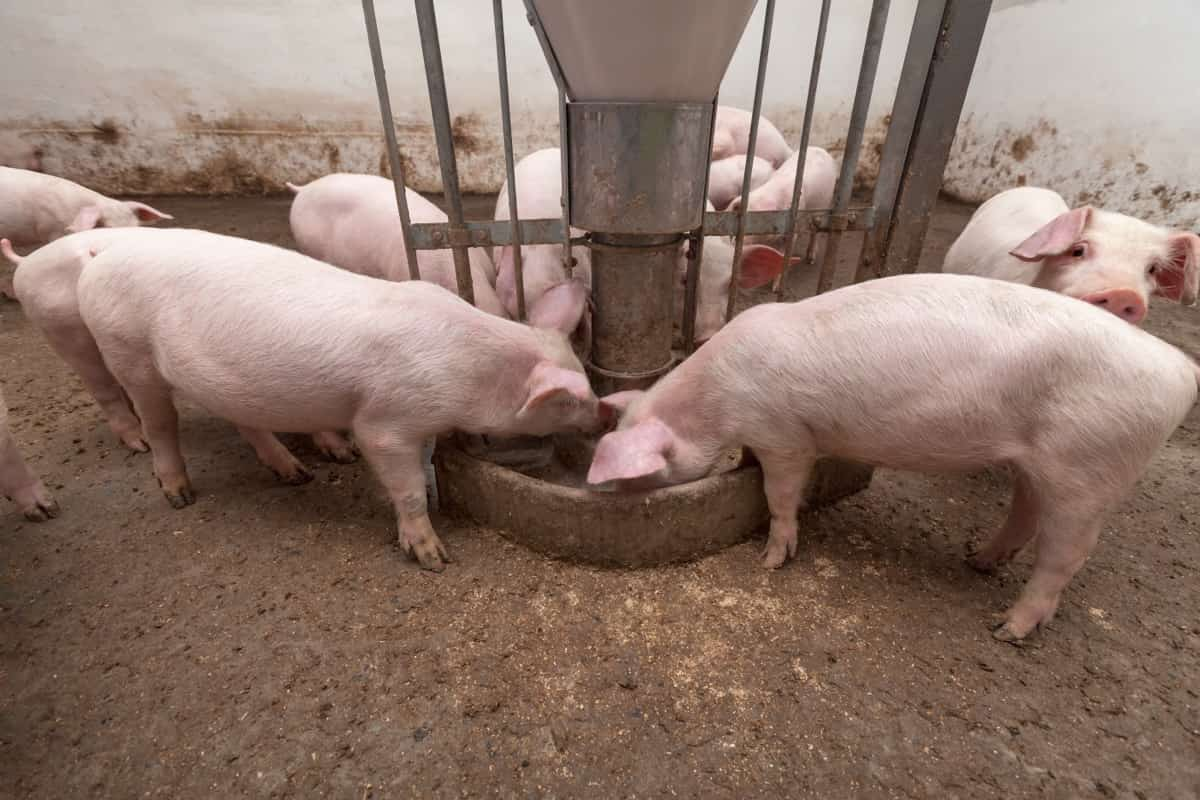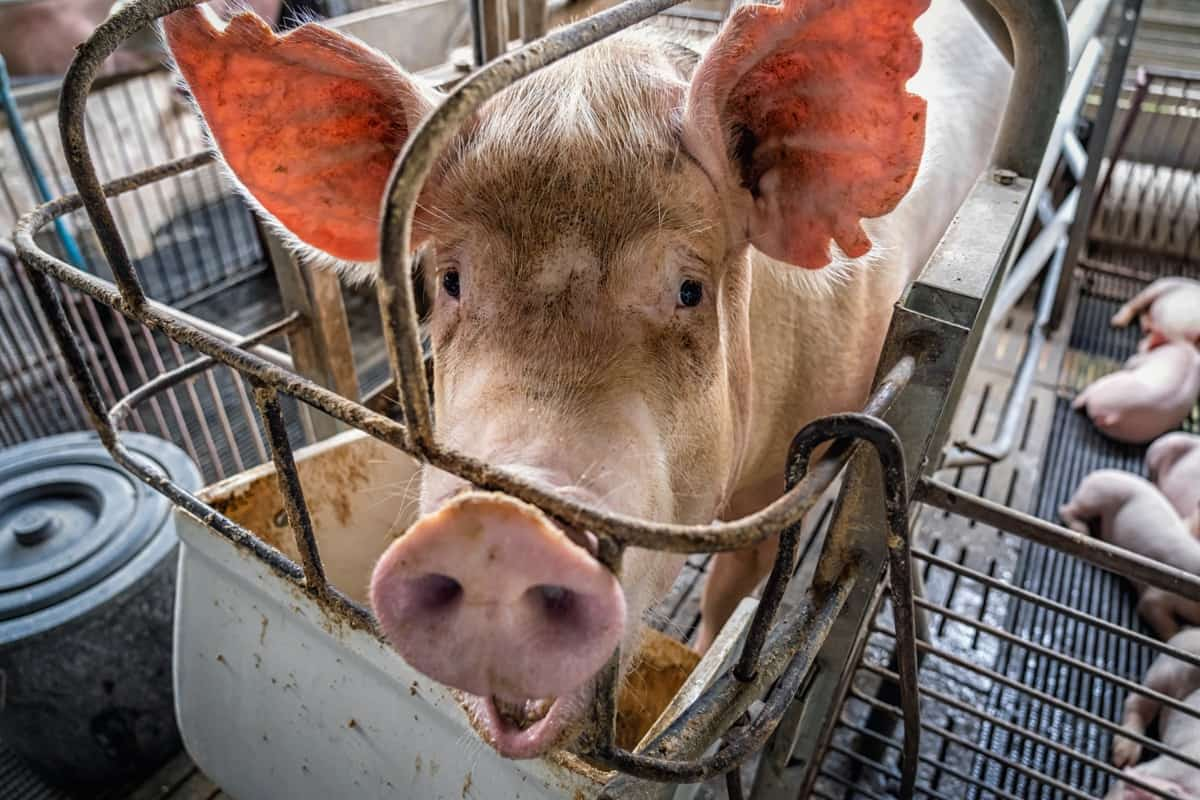Though a profitable venture, pig farming has its fair share of challenges. A comprehensive pig farming guide always highlights that success requires careful planning, meticulous execution, and constant learning. As is the case with any farming endeavor, it is often not the big mistakes but the common, seemingly insignificant ones that undermine the effectiveness of pig farming activities and result in loss of productivity.

While numerous best practices are available to help run a small pig farm efficiently, many farmers unknowingly make frequent mistakes that sabotage their operations. This article highlights the top 10 common mistakes pig farmers must avoid, from housing and space management to the best pig feed formula.
10 Common Mistakes to Avoid in Pig Farming
Inadequate Housing and Space Management
The first and most common mistake is the need for proper housing and space management. Like any other animal, pigs require enough space to move around freely and comfortably. The amount of space required per pig depends on its age and size, and pig farmers must account for this when planning their farm infrastructure.
Inadequate space can lead to unhygienic conditions, increased resource competition, and heightened stress levels among pigs, reducing growth rates and increasing susceptibility to diseases. It is also important to ensure that the pig housing is robust, weatherproof, and easy to clean, as these factors directly influence the health and productivity of the animals.
Poor Nutrition and Feeding Practices
Poor nutrition and feeding practices are other common mistake. Pigs require a well-balanced diet enriched with vitamins, minerals, and other nutrients for optimal growth. The best pig feed formula should include a blend of different types of feeds for pigs. It should contain an appropriate mix of protein, carbohydrates, fats, and fibers, emphasizing high-quality ingredients that are easy to digest. Feeding practices also matter significantly. Overfeeding or underfeeding can lead to numerous health issues. Feeding pigs regularly and in adequate quantities, considering their age, size, and growth stage, is fundamental to pig farming.
Lack of Proper Ventilation and Temperature Control
Temperature regulation and ventilation are essential for pig comfort and health. Pigs, unlike humans, cannot sweat, making them susceptible to heat stress. Hence, a serious error is a lack of proper ventilation and temperature control in pig housing. Appropriate ventilation helps remove excess heat, dampness, and harmful gases from the pig’s environment. Meanwhile, temperature control, including provisions for heating during colder months, and cooling during warmer months, ensures the pigs are comfortable, thus promoting better growth and overall health.
Failure to Address Biosecurity Measures
In the domain of pig farming, biosecurity encompasses the range of protocols implemented to hinder the introduction and transmission of diseases within the confines of the pig farm. A mistake often made by farmers is ignoring the importance of these measures. Simple steps such as limiting visitors to the farm, isolating new arrivals before introducing them to the existing herd, and regularly disinfecting pig housing and equipment can go a long way in ensuring a disease-free environment for the pigs.
In case you missed it: Spain Pig Farming Business Plan: Solid Strategies for High Profits

Inadequate Waste Management and Sanitation
Good waste management and sanitation practices are crucial to maintaining a healthy and productive pig farm. Mistakes in this area can lead to the accumulation of waste and the creation of unsanitary conditions, increasing the risk of disease outbreaks. Efficient waste management involves regularly cleaning pig housing and safe waste disposal. Regular cleaning ensures a healthier environment for the pigs and helps keep the odor levels down, thus maintaining a pleasant environment in and around the farm.
Neglecting Regular Health Monitoring and Veterinary Care
Regular health checks and veterinary care are vital to maintaining the overall health of the pig herd. Refraining from neglecting these activities is a serious and common error that farmers make. Regular monitoring allows farmers to detect and address potential health issues before they escalate into serious conditions. Regular vaccinations, deworming, and prompt attention to injuries or illnesses form the crux of proper veterinary care. Ignoring these could lead to disease outbreaks, lowered productivity, and even loss of pigs.
Improper Handling and Stress Management
Pigs are sensitive animals, and improper handling can lead to stress, affecting their overall health and growth. Using force, abrupt movements, and loud noises should be avoided while handling pigs. Instead, they should be managed gently and calmly to minimize stress. Failing to manage stress effectively is another common mistake that can lead to detrimental outcomes, such as reduced feed intake, slow growth rates, and a weakened immune system.
Ignoring Signs of Disease and Failure to Implement a Disease Prevention Program
Another frequent oversight is the failure to promptly identify signs of disease and implement a disease prevention program. Early detection and treatment of diseases can significantly reduce pig mortality rates and maintain farm productivity. Regular monitoring, coupled with a comprehensive disease prevention program that includes vaccination schedules, biosecurity measures, and parasite control, can help prevent outbreaks of diseases in pig farms.
Inadequate Record-keeping and Data Management
Proper record-keeping and data management are crucial to running a successful pig farm. Unfortunately, this is an area often neglected by farmers. Keeping accurate and up-to-date records on pig health, growth rates, feed intake, vaccination schedules, and other important parameters helps make informed decisions about feed strategies, disease management, and overall farm management. Inadequate record-keeping can lead to critical information oversight and poor decision-making.
Overstocking and Improper Grouping Strategies
Finally, excessive stockpiling and inadequate segregation of swine represents a prevalent error that can result in significant complications. Overstocking leads to competition for resources, like food and water, and increases the likelihood of disease transmission. On the other hand, an improper grouping of pigs – such as mixing different age groups or sizes – can lead to bullying and injury. Pigs should be grouped according to age and size, and adequate space should be provided to ensure they can thrive and grow optimally.
In case you missed it: Moldova Pig Farming Business Plan: Solid Strategies for High Profits

Conclusion
Running a successful pig farm involves more than just understanding different types of feeds for pigs or having the best pig feed formula. It requires careful attention to housing, nutrition, biosecurity, waste management, health monitoring, stress management, disease prevention, record-keeping, and pig grouping strategies.
Avoiding these common mistakes can significantly enhance the productivity of pig farming activities and contribute to the success of any small pig farm. By paying close attention to these aspects, farmers can ensure their pigs’ health and productivity and, consequently, their farms’ profitability.
- Feed Your Flock for Less: Top 10 Tips to Save on Chicken Feed
- Ultimate Guide to Ossabaw Island Hog: Breeding, Raising, Diet, and Care
- Hatching Answers: The Top 10 Reasons Your Chickens Aren’t Laying Eggs
- Eggs and Economics: Breaking Down the Cost of Raising Backyard Chickens
- Defend Your Greens: Proven Methods to Keep Iguanas Out of Your Garden
- Ultimate Guide to Cinnamon Queen Chicken: A Comprehensive Guide for Beginners
- Ultimate Guide to California Tan Chicken: Breeding, Raising, Diet, Egg-Production and Care
- Ultimate Guide to Marsh Daisy Chicken: Breeding, Raising, Diet, and Care
- 10 Types of Chicken Farming Businesses You Can Start for Profits